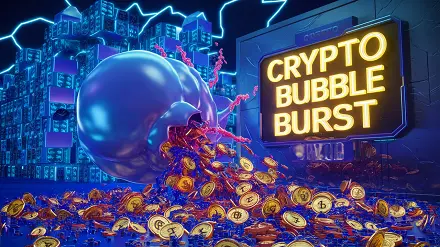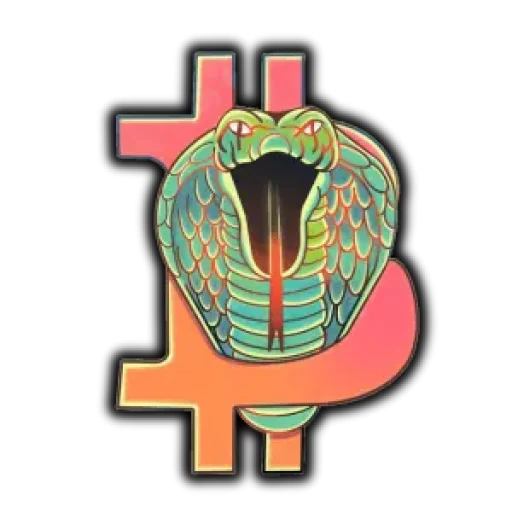Ever watched a crypto chart launch like a rocket only to plummet like a stone? If you’ve been around this space for more than five minutes, you know exactly what I’m talking about. That heart-pounding, can’-look-away feeling is what most people call the “crypto bubble.”
We’ve all seen the headlines: Bitcoin’s epic run turning early believers into millionaires, followed by the gut-wrenching “crypto winters” that wiped out portfolios. And who could forget the meme coin craze, where jokes literally became millions—and then, for most, just jokes again. It’s enough to make your head spin.

But here’s the thing I’ve learned from riding these waves: labeling it all as just a “bubble” misses the real story. What if I told you that beneath all the hype and mania lies a fascinating blueprint of human psychology, groundbreaking tech, and a financial revolution in the making?
That’s exactly what we’re going to unpack together. In this deep dive, we’re going to rewind the tape and look at the history of these boom-bust cycles.
We’ll break down what really makes them tick and—most importantly—I’ll share some hard-earned, actionable strategies to help you not just navigate the next big surge, but actually come out on the other side stronger.
Table of Contents
Ready to look past the hype? Let’s get into it.
1. What Actually Defines a Crypto Bubble?

Alright, let’s get down to brass tacks. We throw the term “crypto bubble” around a lot, but what does it really mean in the wild world of crypto?
At its heart, a crypto bubble is what happens when prices completely detach from any semblance of real-world value or utility.
It’s not just a bull market; it’s a full-blown speculative fever dream. Think of it like a party where the music is pumping, everyone’s having a great time, but no one notices the building is on fire. The price is being driven by pure emotion—not fundamentals.
How can you spot one?
Well, from my experience, they all tend to follow a similar recipe.
You’ll usually see:
- Exponential, “is-this-glitch?” price surges. I mean, who could forget Bitcoin’s insane run in 2017? We’re talking a life-altering 1,900% rally that had everyone from your barber to your grandma asking about private keys. It’s thrilling, but it’s also a classic warning sign.
- Full-blown mainstream mania. This is when it spills out of crypto Twitter and Reddit and into the real world. Remember when it felt like every other commercial break featured a celebrity shilling a meme coin? Or when CNBC basically became a 24/7 crypto hype channel? That’s the sound of the bubble inflating to its peak.
- The infamous “this time is different” mantra. This might be the biggest red flag. It’s the chorus you hear in every bubble, where people passionately argue that old rules like “what goes up must come down” no longer apply. History, as they say, doesn’t repeat itself, but it often rhymes.
- Leverage running rampant. This is the gasoline on the fire. When exchanges make it easy for traders to borrow 50x or 100x their capital to chase gains, that’s when things get really dangerous. It supercharges the gains on the way up, but it absolutely magnifies the panic and liquidations on the way down. It’s like building a skyscraper on a foundation of toothpicks.
2. The Anatomy of a Bubble: Riding the 5-Stage Rollercoaster
Alright, let’s break this down. It turns out these market cycles aren’t totally random chaos. They often follow a pattern famously outlined by economist Hyman Minsky. Once you see it, you can’t unsee it—it’s like watching the same movie play out again and again, just with different actors.
Let’s walk through the five stages. Strap in; it’s quite a ride.

Stage 1: Displacement (The Spark)
Every fire needs a spark. This is the catalyst, the big new idea that disrupts the status quo and gets the smart money interested.
- Think: Bitcoin in 2013, gaining traction as a hedge against failing banks during the Cypress crisis.
- Or: Ethereum in 2020, when DeFi promised to rebuild the entire financial system from the ground up. Pretty compelling, right?
- More recently: Solana’s 2021 explosion, riding the wave of a massive NFT boom that promised faster and cheaper trades than Ethereum.
Stage 2: Boom (The Steady Climb)
This is where things start getting exciting. Prices begin a steady, confident climb. It’s not a moonshot yet—it’s a “hmm, this thing might actually have legs” phase. Early adopters pile in, media outlets start writing “what is cryptocurrency?” articles, and the foundations are laid.
Stage 3: Euphoria (The “To the Moon!” Phase)
Hold onto your hats. This is the stage everyone remembers. The market goes absolutely parabolic. Your Uber driver is giving you token tips, and meme coins with dog logos somehow rack up gains in the millions of percent. Sound familiar? It’s a frenzy of FOMO, with retail investors flooding in and leverage reaching absolutely insane levels. Logic checks out at the door.
Stage 4: Profit-Taking (The Smart Money Exits)
While everyone is at the party, the folks who brought the beer are quietly heading for the exit. This is when the “whales” and insiders start cashing out. You can spot the signs if you know where to look:
- Declining exchange reserves: Big players are moving coins to exchanges to sell them.
- Rising stablecoin dominance: Money is fleeing risky assets for the safe harbor of USDC or USDT.
- Negative funding rates: This gets technical, but it basically means way too many people are betting on higher prices—it’s a crowded trade.
Stage 5: Panic & Collapse (The Stampede for the Door)
And then… the music stops. A catalyst hits, leveraged positions get liquidated, which pushes prices down further, triggering more liquidations. It’s a brutal domino effect. We’re talking 80-90% drops that feel endless. The terrifying examples of Terra/Luna’s $45B implosion and the FTX bankruptcy are textbook Stage 5 events. It’s not pretty, but it’s a brutal and necessary part of the cycle.
Seeing it laid out like this, it feels less like magic and more like market psychology, doesn’t it?
3. Learning from the Past: A Blast from (Not-So-Ancient) History
Let’s be real—in crypto, if you don’t look back, you’re doomed to repeat the same mistakes. I’ve been through a few of these cycles myself, and let me tell you, the patterns are eerily familiar. Let’s break down two of the biggest ones.
2017: The Wild West of ICO Mania

- The Catalyst: Remember when Ethereum dropped its ERC-20 standard? It was like giving everyone a kit to build their own digital startup overnight. Suddenly, anyone with a fancy idea and a whitepaper could launch a token.
- The Euphoria: And boy, did they. We saw over $6 billion pour into projects. I’ll never forget the sheer madness of it; some of these “projects” were literally just a few lines of text and a promise. It was the ultimate “idea guy” paradise.
- The Collapse: You can probably guess what happened next. When the music stopped, a staggering 90% of these projects vanished into thin air. The SEC stepped in, and the party was officially over.
- The Lesson We Learned the Hard Way: Just because something is innovative doesn’t mean it has any real value. A slick website is not a business model.
2021: The “Everything Bubble”
- The Catalyst: This one was a perfect storm. COVID stimulus checks hit bank accounts, interest rates were at rock bottom, and for the first time, big institutions like Tesla and MicroStrategy started buying Bitcoin. It felt like crypto had finally “made it.”
- The Euphoria: The numbers were just mind-blowing. Bitcoin touching $69k? Dogecoin, a literal joke, going up 26,000%? The NFT boom where digital art was selling for millions? It was a total fever dream. I knew we were at peak mania when my least-tech-savvy friend asked me how to buy Shiba Inu.
- The Collapse: Then, the macro tides turned. The Fed started hiking rates, and that free-flowing liquidity dried up almost overnight. The result? A brutal $2 trillion evaporation from the market. Ouch.
- The Lesson We Learned the Hard Way: Never underestimate the power of macroeconomics. Crypto isn’t an isolated island; when the global economy sneezes, crypto catches a cold. Tech is great, but liquidity is king.
4. So… Are We in a Bubble Right Now? (The 2025 Reality Check)
This is the million-dollar question, isn’t it? Based on what we’re seeing today, the answer isn’t a simple yes or no. It’s more like, “Well, it’s complicated.”
Let’s look at the evidence:
The Case for “Localized Froth”:

Let’s not kid ourselves—speculation is absolutely back in certain corners.
- Meme Coin Mania 2.0: Coins like $PEPE and $WIF are up over 500% recently. It feels very 2021 in the meme space, and that’s almost always a sign of retail traders chasing quick gains.
- Retail is Knocking on the Door: Binance adding 40 million new users in a single year is a massive signal that the everyday person is getting interested again. That’s a huge influx of new money and emotion.
The Case for “This Isn’t 2021”:
But here’s why many experts think this cycle is different, and frankly, healthier.
- Moderate Leverage: Compared to the insane 100x leverage we saw last time, open interest is still way down. This is good! It means there’s less dry powder for a catastrophic cascade of liquidations.
- The Big Players are Here: This is the biggest change. Spot Bitcoin ETFs now hold a massive 5% of all Bitcoin. This isn’t just your cousin Dave YOLOing his savings; this is BlackRock and Fidelity. They bring stability and reduce wild volatility.
So, is everything a crypto bubble? Probably not. But are there bubbles within the market? Absolutely.
We’re seeing a tale of two markets: you’ve got the reckless casino of Solana meme coins on one side, and on the other, you have a more mature, institutionally-backed Bitcoin and Ethereum market with stronger fundamentals.
The key is to know which game you’re playing. Are you sitting at the high-stakes institutional table, or are you throwing a few chips on the meme coin roulette wheel? Knowing the difference is what will help you survive—and even thrive—no matter what comes next.
5. Your Playbook: How to Not Just Survive, But Actually Thrive
Alright, let’s get tactical. This is where we move from theory to practice. Having navigated a few of these cycles myself (and learned from some costly mistakes), here’s the game plan I wish I’d had from the start.
Think of it less like a rigid rulebook and more like a guide for keeping your head when everyone else is losing theirs.

Pre-Bubble: The “Quiet Accumulation” Phase
This is the boring part—and honestly, the most important. It’s when the market is quiet, fear is high, and your future gains are actually made. This is where you go shopping.
- Your Focus: Keep it simple. This is the time to build a core position in the blue chips—Bitcoin and Ethereum are your anchors. Then, look for high-utility Layer 1s like Solana or Toncoin that have strong developer activity and real users, not just hype.
- Your #1 Strategy: Dollar-Cost Averaging (DCA). Seriously, just set it and forget it. Automating your buys takes all the emotion out of it. Trying to time the absolute bottom is a fool’s errand; consistently building your position over time is how the smart money actually does it.
Boom Phase: The “Growth & Diversification” Game

The momentum is building. Your portfolio is in the green, and your Twitter feed is getting louder. This is when you start thinking about scaling up—and scaling out.
- Your Focus: Now you can start looking beyond the giants. This is the time for carefully chosen mid-cap alts (think established projects like Chainlink or Polkadot) and promising emerging narratives like DePIN or Real-World Assets (RWA). Do your research!
- Your Key Move: Taking Partial Profits. I know, I know. It’s hard to sell when things are going up. But here’s a mantra I live by: “Nobody ever went broke taking a profit.” When an investment hits a 2-5x gain, sell a portion—maybe 25-30%—to take your initial investment off the table. Now you’re playing with the house’s money, and the psychology of that is incredibly powerful.
Euphoria Phase: “Risk Management is King”
This is it. The phase where your Uber driver is giving you token tips. The air is thin up here, and it’s time to get defensive.
- First, Know the Red Flags:
- When your Twitter timeline is flooded with “can’t lose” sentiment and嘲笑 anyone who mentions risk.
- When exchange inflows spike—that’s a clear sign retail FOMO is hitting a peak and people are buying at the top.
- Your Survival Strategy:
- Get Liquid: Start trimming your positions and aim to have a healthy cushion of cash (or stablecoins). Having dry powder during a crash is a superpower—it lets you buy when there’s “blood in the streets.”
- Set Stop-Losses: Protect your capital! Set hard stops below key support levels. It’s not a prediction; it’s an insurance policy.
- Ditch the Crazy Leverage: If you absolutely must use leverage (and I don’t recommend it for most), keep it under 5x. Anything more is just gambling, and the liquidation risk will keep you up at night.
Remember, the goal isn’t to sell at the absolute top—that’s mostly luck. The goal is to walk away with life-changing profits and preserve your capital to fight another day.
Post-Collapse: The Silver Lining – Opportunity Hunting

Let’s be honest: the crash is brutal. Watching your portfolio take a hit is no one’s idea of a good time. But if you’ve played your cards right and have some dry powder left? This is where fortunes are truly made.
It’s like shopping during a fire sale—everything is 80% off. The key is to have the courage to buy when everyone else is paralyzed by fear.
- Your Focus: This isn’t the time for meme coins. This is the time to go back to quality. Look for those undervalued assets with rock-solid fundamentals that got thrown out with the bathwater. Think about Ethereum after some of its historic drops—the tech was still there, building through the bear market, waiting for the next cycle.
- Your Strategy: Be a Greedy When Others Are Fearful. It’s a classic Warren Buffett saying for a reason. Start rebuilding your positions when these classic signals flash:
- The MVRV Z-Score dips below 0. This is a nerdy metric, but trust me, it’s like a “historically oversold” sign for crypto. It basically tells us the market is pricing assets below their realized value—a rare buying opportunity.
- The Fear & Greed Index hits “Extreme Fear.” When sentiment is at its absolute worst and your crypto group chats have gone silent, that’s often the best contrarian indicator you’ll get.
6. The Uncomfortable Truth: Why Bubbles Are Inevitable (and Honestly, Necessary)

I know it sounds crazy, but we need these cycles. As painful as they are, bubbles aren’t just a bug in the crypto system—they’re a feature. They’re the market’s wild, chaotic, and incredibly effective way of driving progress.
Here’s why:
- Innovation Acceleration: Let’s face it, crazy speculation funds crazy experimentation. The 2017 ICO mania, for all its scams and failures, was a massive, global capital raise that ultimately funded the builders who created the DeFi ecosystem we have today. It was the necessary chaos that built the foundation.
- Market Cleansing: A brutal bear market is like a forest fire. It burns away the deadwood (the weak, useless projects) and allows the strongest trees (the projects with real utility and teams) to survive and thrive. It’s the classic Amazon vs. Pets.com story from the dot-com era. The strong get stronger.
- The Ultimate Adoption Catalyst: Love it or hate it, the 2021 mania is what put crypto on the map for hundreds of millions of people. That mainstream awareness, even if it came from hype, brought in new users, developers, and eventually, serious institutional players. The bubble, in a weird way, is the onboarding process.
So while the ride is stomach-churning, try to see it as part of a larger, necessary process. It’s the market’s way of separating the fleeting hype from the truly transformative technology.
7. The Future: Growing Pains and the Path to Maturity

Let’s be real—crypto isn’t going anywhere. But it is growing up. The wild-west days are slowly giving way to something more structured, and that’s actually a good thing for everyone. Here’s what I see on the horizon:
- Reduced Volatility (Eventually!): Love those 20% daily swings? They might become less common. As institutional dominance increases with giants like BlackRock and Fidelity now major players, their sheer size and long-term strategies act like a stabilizing anchor on the entire market. It won’t be boring, but it might be less of a rollercoaster.
- Regulatory Clarity is Coming: Yes, the “R” word that makes some crypto purists flinch. But think about it: SEC-approved ETFs aren’t a sell-out; they’re a filter. They provide a safe on-ramp for traditional investors and, more importantly, they help filter out the obvious scams and junk that give the space a bad name. It raises the bar for everyone.
- Real-World Utility Will Take Center Stage: The future isn’t just meme coins. It’s about the tokenization of everything—fractions of real estate, stocks, and other real-world assets moving on-chain. This grounds crypto in tangible, understandable value. That’s when we stop talking about “what if” and start talking about “what is.”
Conclusion: Mastering the Pendulum
So, where does this leave us?
After all these cycles, one thing is crystal clear: crypto bubbles aren’t anomalies; they’re the growing pains of a revolutionary asset class. They are the market’s brutal, yet effective, way of separating hype from reality. They destroy reckless capital, but in their wake, they forge incredibly resilient technologies and—if you’re paying attention—hardened, wiser investors.
Your survival guide boils down to three timeless principles:
- Respect the Cycle. This won’t be the last bubble. Understanding that boom and bust is part of the deal is half the battle. Don’t be surprised when it happens.
- Bet on Builders, Not Hype. In the long run, fundamentals always win. Prioritize projects with real utility, strong teams, and active communities over the flavor-of-the-week coin shilled by an anonymous account.
- Use Volatility, Don’t Let It Use You. Embrace the swing, but don’t be consumed by it. Have a plan, take profits, and keep your emotions in check.
It reminds me of what billionaire investor Howard Marks once brilliantly observed: “The bubbles aren’t created by crooks. They’re created by optimism.”
And that optimism will return. It always does. The next wave of excitement is inevitable. But when it comes, it won’t be blind optimism that sets you apart—it will be wisdom. The wisdom to know the difference between a trend and a transformation, and the discipline to act accordingly.
Stay sharp, stay curious, and for goodness’ sake, don’t invest more than you can afford to lose. See you on the other side.



